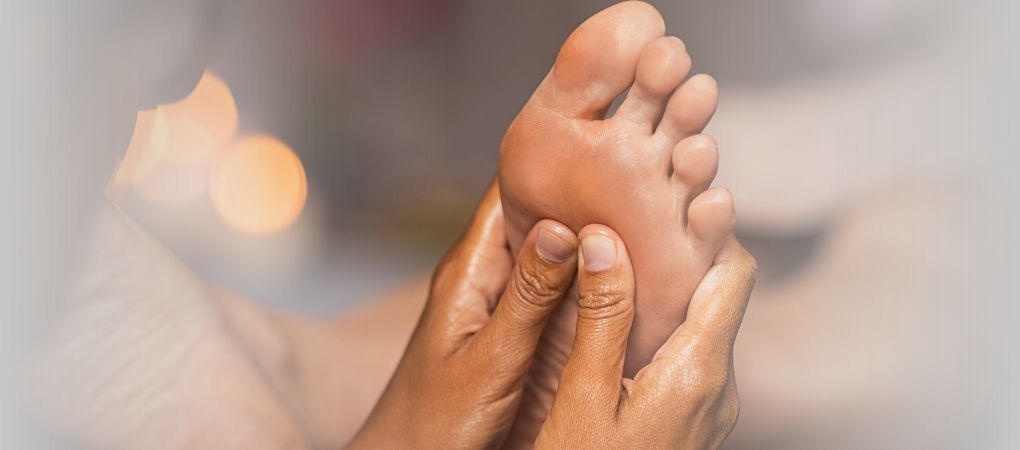Francesca Galiano
|
06/09/2023 - Last update 14/11/2023
John M. Lavelle, Mark E. McKeigue | Year 2009
Musculoskeletal dysfunction and foot drop: diagnosis and management using osteopathic manipulative medicine
Pathology:
Foot Drop
Type of study:
Case Report
Date of publication of the study’:
2009/Dec/01

Purpose of the study
- Objective: to show the usefullness of OMT in a case of foot drop
- Measured outcomes: assessment of the symptoms
Participants
- Number: 1
- Description: a 47-year-old man arrived at the clinic noticeably dragging his left foot which he could not lift. He had suffered no trauma, but had driven for 5 hours straight the previous night keeping his leg bent most of the time (the car had an automatic transmission). While getting off the car, he noticed some numbness and tingling in his left foot. The next morning he was not able to lift the foot up. The patient reported to have never experienced something like this before. He had taken no analgesics, and muscle stretching had brought no relief.
The patient had no history of diabetes or muscular, neurological or vascular problems, but showed hypertension and hypercholesterolemia managed by lisinopril and atorvastatin. He was not a smoker and did not suffer from hypersensitivity.
The medical examination showed a physically healthy man, with stable vital signs and no alterations affecting his heart, lungs, and abdomen. The perceived heartbeat in the upper and lower extremities was normal. However, a reduced motor strength of 1 out of 5 was detected in the ankle dorsiflexion and eversion. No sensations were detected against light touch or with two-point discrimination test at the level of the L5 and S1 dermatomes. Deep tendon reflexes had an intensity of 1 out of 4 in the Achilles and patellar tendons of the left leg and 2 out of 4 in the right-leg ones.
The osteopathic evaluation showed: a dysfunction at the left posterior head of the fibula with pain on palpation of the common peroneal nerve; stiff hamstring with tender point at the level of the posterior-lateral thigh muscles, bilaterally; hypertonic large and small psoas muscles, also bilaterally.
The diagnosis was drooping foot secondary to compression of the common peroneal nerve due to dysfunction of the posterior head of the fibula.
Interventions and evaluations
- Evaluation of the symptoms before and after the treatment and the following day.
- A 15-minutes session of OMT.
- OMT: muscle energy techniques directed to the psoas and posterior thigh muscles, and deep articulatory techniques (for 1 minute) to the head of the fibula.
Results
During the execution of articulatory techniques, the patient felt discomfort while the foot started to become warm and tingled. After treatment, the patient showed a sensory improvement along the back of the foot and a motor strength of 4 out of 5 for the foot in dorsiflexion, thus becoming able to walk comfortably.
The following day, the patient called in the outpatient clinic to report that he had fully recovered his left foot’s range of motion (ROM), strength, and sensations.
He was advised to perform a series of exercises using some rubber bands in order to strengthen his left-ankle muscles.
Discussion
OMT has been shown to resolve a case of foot drop through a series of techniques directed at the psoas muscles, posterior thigh muscles and fibula joint.
Most likely, this result was due to the fact that the cause of the patient’s symptoms was precisely the compression of the common peroneal nerve by the head of the fibula, “put in traction” posteriorly by a contracting hamstring.
Interestingly, having solved the problem with a short OMT session avoided the need for various diagnostic tools (eg, laboratory tests, radiography, nerve conduction studies) or potentially costly and invasive other treatments (eg, ankle orthotics, nerve root block, tendon transposition).
This case report emphasizes the importance for osteopaths to have a perfect understanding of anatomy.
The review of Osteopedia
By Marco Chiera
Strengths: probably the first case concerning the usefulness of OMT in a case of foot drop; demonstration of the usefulness of OMT in an acute case of foot drop due to compression of the common peroneal nerve, a result to be further investigated because, if confirmed, as the authors said, further diagnostic investigations and potentially costly, invasive, and time-consuming treatments could be avoided.
Limits: like any case report, it is difficult to generalize its results; lack of follow-up to verify the patient’s actual full recovery.

Are you an osteopath?
Register and enjoy the membership benefits. Create your public profile and publish your studies. It's free!
Register now
School or training institution?
Register and enjoy the membership benefits. Create your public profile and publish your studies. It's free!
Register now
Do you want to become an osteopath? Are you a student?
Register and enjoy the membership benefits. Create your public profile and publish your studies. It's free!
Register now







